Discover How You Can Prepare Thai Coconut Rice Like a Pro
Thai coconut rice is one of those rare side dishes that manages to steal the spotlight from the main course. It’s soft, fragrant, and infused with the creamy sweetness of coconut milk, making it the perfect partner to spicy Thai curries or a satisfying bite all on its own. Here at JustThaiRecipes, this dish holds a special place in our hearts.
As Lina shares on the About page, her love affair with Thai food began in a bustling Bangkok night market where she first tasted a simple bowl of coconut rice paired with grilled chicken. That memory sparked her journey to bring the authentic flavors of Thailand into home kitchens everywhere. Together with her partner, she created JustThaiRecipes to share traditional Thai recipes that are easy, flavorful, and absolutely delicious.
This ultimate guide will teach you everything you need to know about making Thai coconut rice just like your favorite restaurant. You’ll discover how to create creamy, fluffy rice every time, learn about its origins and health benefits, and find answers to the most common questions like “Is Thai coconut rice healthy?” and “How to make coconut rice like restaurants?” Plus, we’ll give you expert tips for using jasmine rice, coconut milk, and optional pandan leaves for the most authentic experience.
Don’t miss our Thai Coconut Pancakes for a sweet pairing idea after your meal.
Table of Contents
Table of Contents
Understanding Thai Coconut Rice
What Makes Thai Coconut Rice So Special?
Thai coconut rice, known locally as khao man kati, is a comforting dish that perfectly balances creamy richness with light floral notes from jasmine rice. Its signature sweetness and gentle saltiness make it a versatile side dish for curries, grilled meats, or even tropical desserts like mango sticky rice. What sets it apart from plain steamed rice is its ability to transform an everyday meal into something extraordinary.
Traditionally, Thai coconut rice is enjoyed with spicy green curry or as part of a celebratory meal. In Thailand, it’s also common to find street vendors serving it with coconut cream drizzled on top and a sprinkle of toasted coconut flakes for texture and aroma. This traditional Thai coconut rice recipe relies on quality ingredients and simple techniques to achieve its unforgettable flavor.
Traditional Ingredients Used in Thai Coconut Rice
To recreate the authentic taste at home, you’ll need a handful of pantry staples:
- Jasmine rice: Long-grain and aromatic, it’s essential for achieving the perfect fluffy texture.
- Coconut milk or coconut cream: Full-fat versions give the rice its signature creaminess.
- Pandan leaf (optional): Adds a subtle herbal aroma that’s characteristic of Thai desserts and rice dishes.
- Sugar and sea salt: Balances the flavors beautifully.
- Toasted dried coconut (optional): For garnish and an added layer of crunch.
This combination of ingredients ensures a balance between sweet, savory, and aromatic qualities, making coconut rice a true culinary delight.
Ingredients and Tools You’ll Need
Essential Ingredients for Perfect Coconut Rice
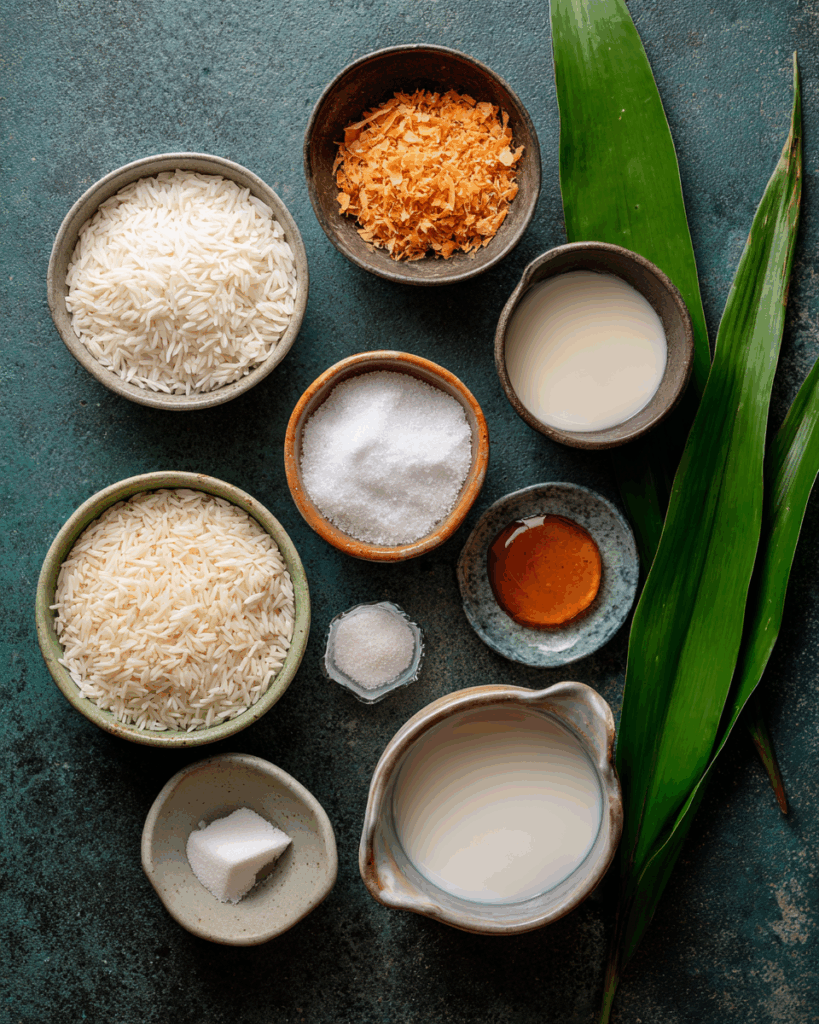
The beauty of Thai coconut rice lies in its simplicity. With just a few key ingredients, you can bring the creamy, aromatic flavors of Thailand into your kitchen. Here’s everything you need to get started:
| Ingredient | Quantity |
|---|---|
| Jasmine Rice | 1 cup (240 ml) |
| Water | ¾ cup (180 ml) |
| Coconut Milk (full-fat) | ½ cup (120 ml) |
| Sugar | 1.5 tbsp (22.5 ml) |
| Fine Sea Salt | 1 tsp (4 ml) |
| Pandan Leaf (optional) | 8 inches |
| Toasted Dried Coconut | For garnish |
Jasmine rice is the backbone of this dish, offering a subtle floral fragrance and slightly sticky texture. Full-fat coconut milk is crucial for achieving the creamy consistency that sets Thai coconut rice apart from other rice dishes. For an even richer aroma, consider adding a strip of pandan leaf during cooking. While optional, this step gives your coconut rice a flavor reminiscent of Thai street food stalls.
If you’re feeling adventurous, garnish your finished dish with toasted dried coconut flakes for an added crunch and a touch of elegance.
Kitchen Tools You Should Have
To make this coconut rice recipe foolproof, a few basic kitchen tools will help:
- Rice cooker: Ideal for hassle-free cooking and consistent results.
- Heavy-bottomed pot with lid: Essential if you prefer stovetop cooking.
- Sieve or fine mesh strainer: For rinsing the jasmine rice thoroughly to remove excess starch.
- Wooden spatula: Perfect for fluffing the rice without breaking the grains.
- Measuring cups and spoons: Accuracy matters when balancing flavors.
Don’t miss our Thai Fried Rice With Chicken for another Thai rice dish that’s packed with bold flavors. It’s a great way to practice your rice-making skills while enjoying an authentic Thai meal.
Step-By-Step Guide to Making Thai Coconut Rice
How to Make Coconut Rice in a Rice Cooker
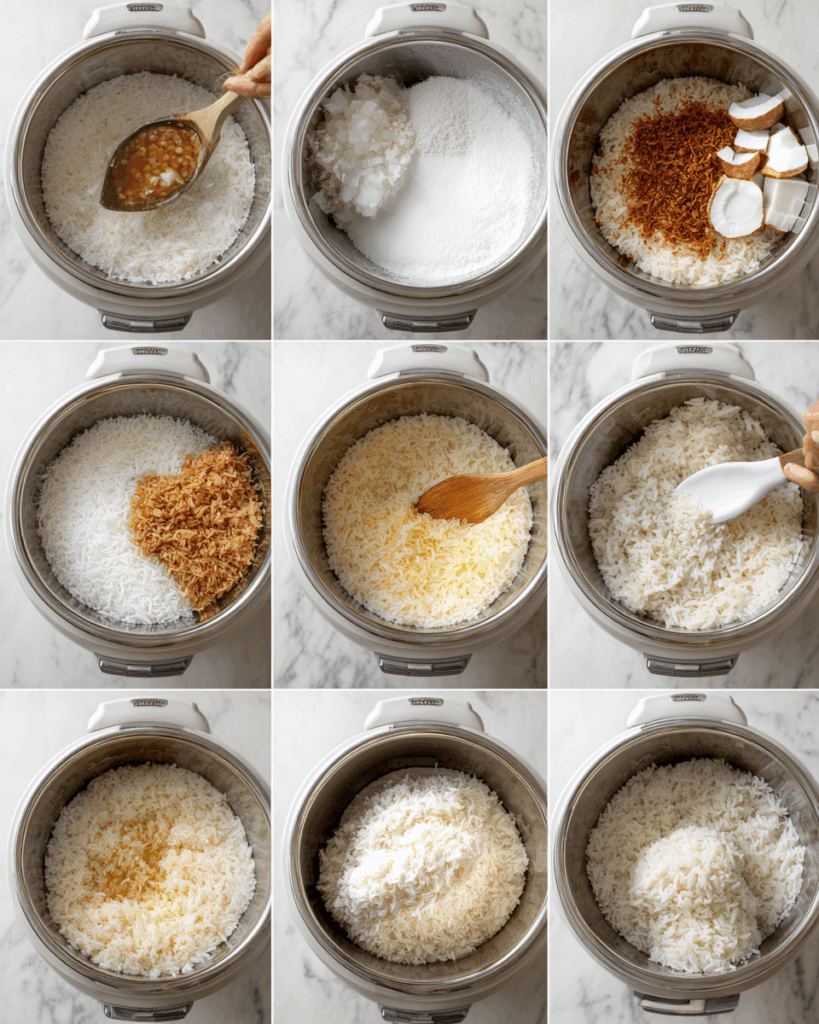
The rice cooker method is hands-down the easiest way to prepare Thai coconut rice. It guarantees fluffy, perfectly cooked grains every time without needing constant supervision.
- Combine the liquids and seasonings
Start by adding ¾ cup (180 ml) water, ½ cup (120 ml) full-fat coconut milk, 1.5 tablespoons (22.5 ml) sugar, 1 teaspoon (4 ml) fine sea salt, and the optional 8-inch pandan leaf into the rice cooker pot. Stir gently to dissolve the sugar and salt completely. - Rinse the jasmine rice thoroughly
Place 1 cup (240 ml) jasmine rice in a sieve and rinse it under cold water several times. Swirl the rice with your hands until the water runs mostly clear. This step removes excess starch and prevents gumminess. Drain well. - Combine rice with liquid
Add the rinsed and drained jasmine rice to the rice cooker. Stir lightly to ensure the rice is evenly distributed and free of clumps. - Cook and rest
Turn on your rice cooker and let it do the work. Once it clicks off, leave the rice covered to steam for an additional 10 minutes. This rest period allows the moisture to distribute evenly, creating fluffy, tender rice. - Fluff and serve
Gently fluff the rice with a wooden spatula, taking care not to mash the grains. Transfer to a serving bowl and sprinkle with toasted coconut flakes if desired.
This is the perfect method for anyone who loves no-fuss cooking but still wants authentic Thai flavors at home.
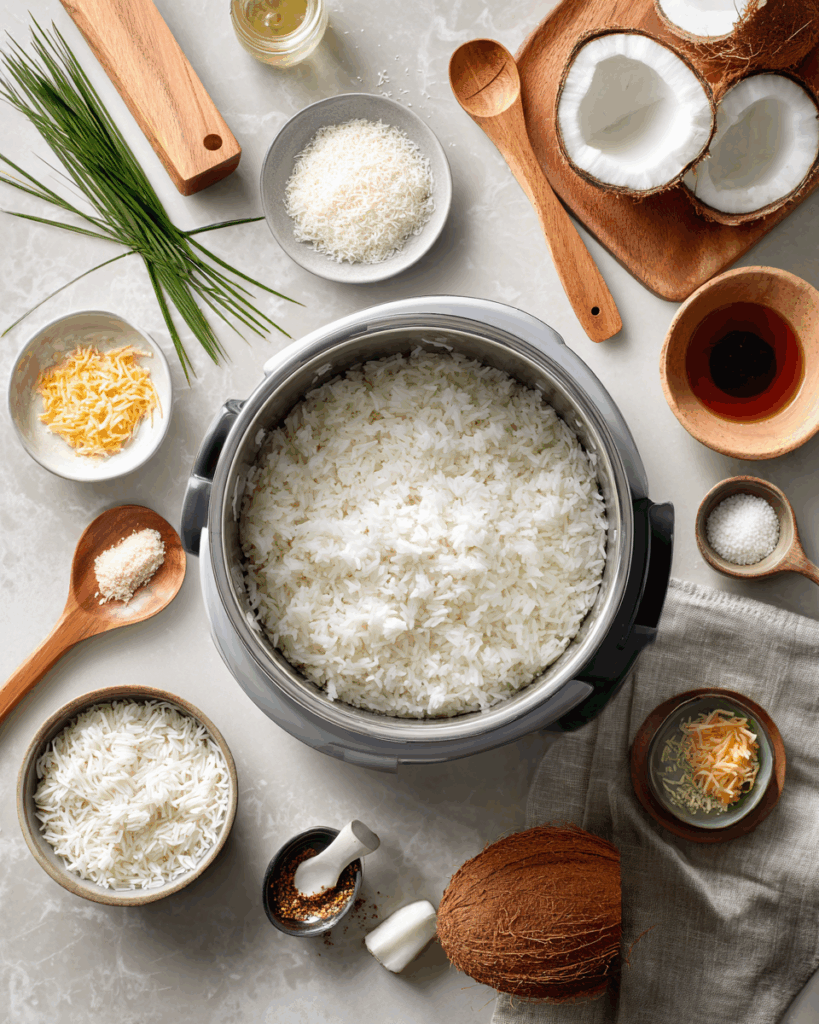
How to Make Coconut Rice on the Stovetop
If you don’t have a rice cooker, the stovetop method is just as effective, provided you watch your heat and timing carefully.
- Rinse and drain the rice
Just like with the rice cooker method, rinse 1 cup (240 ml) of jasmine rice under cold water several times until the water is nearly clear. Drain it thoroughly to avoid excess water during cooking. - Mix liquids and seasonings
In a heavy-bottomed pot, combine ¾ cup (180 ml) water, ½ cup (120 ml) coconut milk, 1.5 tablespoons (22.5 ml) sugar, 1 teaspoon (4 ml) fine sea salt, and the pandan leaf if using. Heat gently on low and stir until sugar and salt dissolve completely. - Add the rice and cook
Stir in the drained rice, breaking up any clumps. Cover the pot with a tight-fitting lid and let it simmer on the lowest heat setting. Cook for about 20 minutes or until all the liquid is absorbed and the rice is tender. To check, push the rice aside with a spatula to see if there’s any moisture left at the bottom. - Let it rest and fluff
Once the rice is fully cooked, turn off the heat immediately to avoid burning. Keep the lid on and let the rice steam in its residual heat for another 10 minutes. Fluff with a wooden spatula and serve with toasted coconut flakes for added texture.
Looking for inspiration? Try pairing your Thai coconut rice with Coconut Mango Chicken Curry for a full Thai dining experience at home.
Tips for Restaurant-Quality Coconut Rice
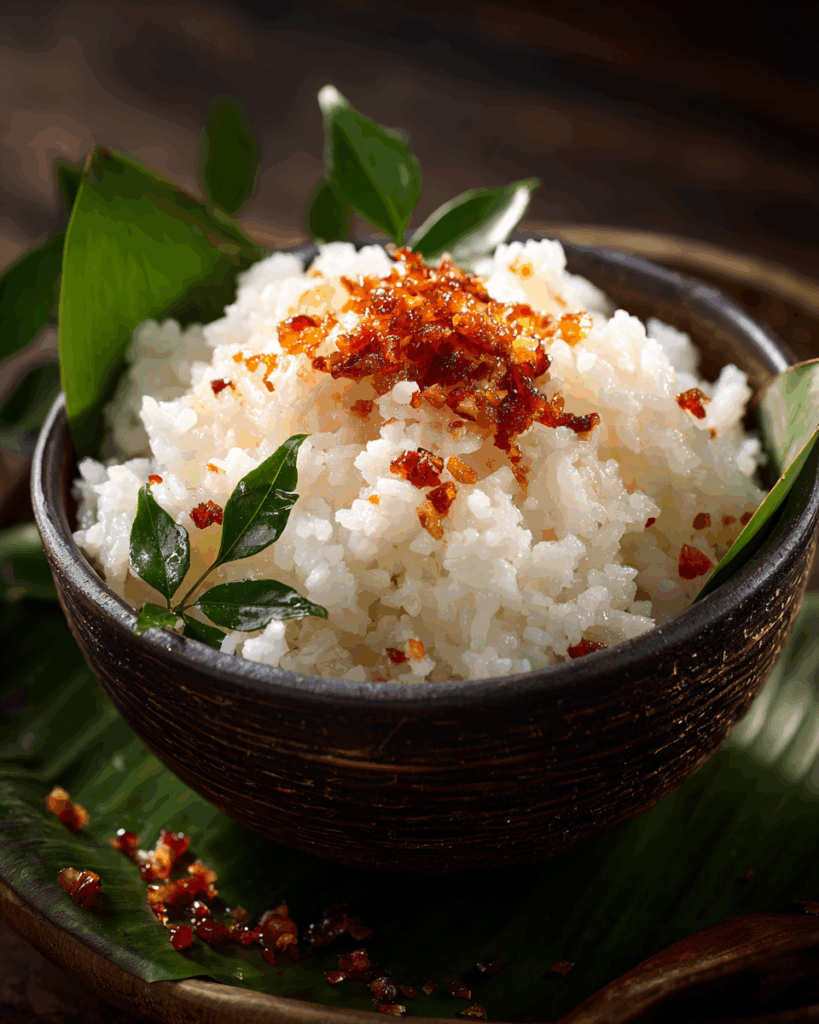
Secrets to Creamy and Fluffy Coconut Rice
Making Thai coconut rice that rivals your favorite restaurant takes a few key techniques:
- Always use full-fat coconut milk
Light coconut milk will not provide the richness needed for that creamy texture. For best results, opt for a brand without stabilizers or additives. - Rinse jasmine rice thoroughly
Removing excess starch ensures each grain cooks up light and separate rather than gummy. - Do not rush the resting period
Allowing the rice to sit undisturbed after cooking helps moisture redistribute evenly, resulting in fluffier grains. - Add pandan leaves for authenticity
Though optional, pandan leaves infuse a subtle herbal note commonly found in traditional Thai coconut rice.
If you’re curious about other coconut rice variations, check out this beautifully detailed guide on Hot Thai Kitchen where they share tips for achieving the perfect consistency and balance of flavors.
Common Mistakes to Avoid
Even experienced cooks can slip up when preparing coconut rice. Here’s what to watch out for:
- Skipping the rinse step
This leads to sticky, clumped rice that lacks the desired lightness. - Using low-fat or diluted coconut milk
The result is bland, watery rice instead of the luscious, creamy texture Thai cuisine is famous for. - Cooking on high heat
This may scorch the bottom and impart a burnt flavor. Keep heat low and steady throughout cooking.
For an alternate approach to fluffy coconut rice, you might enjoy this simple stovetop method from RecipeTin Eats that’s quick and foolproof.
Health Benefits and Nutrition of Thai Coconut Rice
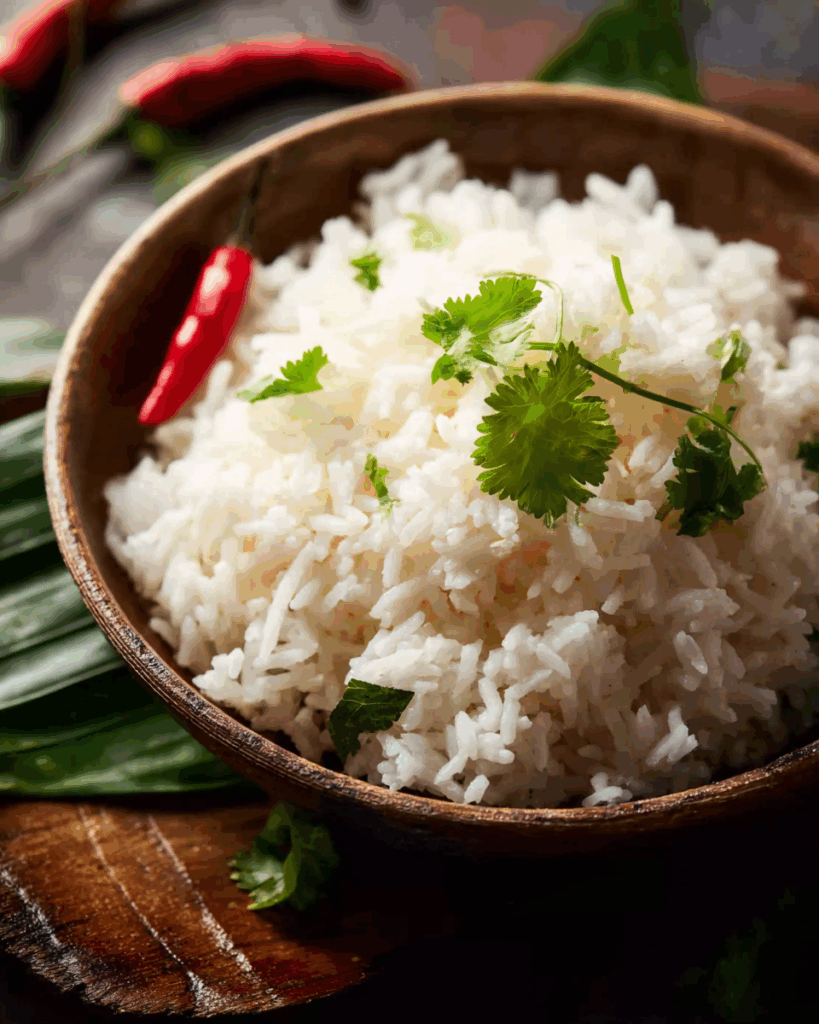
Is Thai Coconut Rice Healthy?
Many people ask, “Is Thai coconut rice healthy?” The answer lies in how it’s prepared and portioned. While coconut milk adds saturated fat, it’s also rich in medium-chain triglycerides (MCTs), which provide quick energy and may support heart health when consumed in moderation. Jasmine rice offers carbohydrates to fuel your body, making this dish a satisfying addition to a balanced meal.
However, it’s worth noting that restaurant-style coconut rice can be higher in sugar and calories. Homemade versions, like the one you’re learning here, allow you to control sweetness and fat content for a healthier alternative.
Nutritional Information (Per Serving Approximation)
| Nutrient | Amount |
|---|---|
| Calories | 230 kcal |
| Carbohydrates | 38 g |
| Fat | 6 g |
| Protein | 3 g |
| Fiber | 1 g |
If you’re looking for a slightly different take, this Allrecipes Asian Coconut Rice offers another perspective with subtle flavor adjustments you might enjoy.
Looking for inspiration? Don’t miss our own Thai Coconut Pancakes for a delightful dessert pairing.
Pairing Ideas for Thai Coconut Rice
What Goes Well with Coconut Rice?
Thai coconut rice is not just a side dish—it’s a versatile star that enhances countless meals. Its subtle sweetness and creamy texture complement spicy, savory, and even sweet dishes perfectly. Here are some classic and creative pairings:
- Thai Green Curry: The spiciness of green curry balances beautifully with the mellow creaminess of coconut rice.
- Grilled Chicken or Fish: A simple grilled protein seasoned with Thai herbs works wonderfully with the coconut undertones of the rice.
- Mango Sticky Rice Style: Transform your coconut rice into a dessert by serving it warm with fresh mango slices and a drizzle of extra coconut milk.
- Stir-Fried Vegetables: For a light vegetarian meal, pair it with a colorful Thai vegetable stir fry.
This dish’s adaptability makes it a favorite for both everyday dinners and special occasions.
Creative Serving Suggestions
Serve your Thai coconut rice in banana leaf bowls for an authentic Thai presentation. Sprinkle toasted coconut flakes on top for added texture and a tropical aroma. You can also mold it into neat domes using a small bowl for an elegant touch at dinner parties.
Storing and Reheating Coconut Rice
How to Store Leftovers
To maintain freshness, cool the coconut rice completely before transferring it to an airtight container. Store it in the refrigerator for up to three days. Avoid leaving it at room temperature for extended periods as coconut milk can spoil quickly.
Best Way to Reheat Coconut Rice
The key to reheating coconut rice without losing its creamy texture is to steam it gently. Place the rice in a heatproof bowl over a pot of simmering water, cover, and steam until heated through. Alternatively, microwave it covered with a damp paper towel to keep the rice moist and prevent drying out.
Mastering Thai Coconut Rice Variations at Home
Exploring Creative Variations of Thai Coconut Rice
While the traditional recipe is loved for its creamy texture and subtle sweetness, there are several delicious ways to adapt Thai coconut rice for different occasions and dietary preferences. Each variation maintains the essence of the dish while introducing exciting new flavors.
Thai Coconut Rice with Coconut Cream
For a richer and more decadent version, replace regular coconut milk with coconut cream. The higher fat content in coconut cream gives the rice an ultra-luxurious mouthfeel, perfect for pairing with bold, spicy Thai curries.
Thai Coconut Rice with Herbs and Spices
Add a few fresh kaffir lime leaves, slices of galangal, or even a stick of lemongrass while cooking. These fragrant Thai ingredients infuse the rice with a complex aroma and transform a simple bowl of coconut rice into a sophisticated side dish.
Sweet Thai Coconut Rice for Desserts
To turn Thai coconut rice into a dessert, increase the sugar slightly and serve it with ripe mango or caramelized bananas. Drizzle extra warm coconut milk over the rice and sprinkle with toasted sesame seeds for a traditional Thai dessert experience.
Tips for Perfecting Thai Coconut Rice Every Time
- Use jasmine rice exclusively for its fragrance and slightly sticky texture.
- Always rinse the rice thoroughly until the water runs clear to avoid clumping.
- Let the rice rest after cooking to ensure each grain absorbs the flavors fully.
- Experiment with toppings like toasted coconut flakes, crushed peanuts, or a drizzle of palm sugar syrup for added texture and flavor.
Why Thai Coconut Rice Deserves a Spot in Your Weekly Menu
Thai coconut rice isn’t just a once-in-a-while dish—it’s a versatile recipe that can anchor your weekly meals. From a cozy weeknight dinner alongside stir-fried vegetables to an elegant side at a dinner party, its ability to pair with both savory and sweet dishes makes it an invaluable addition to your cooking repertoire.
Whether you’re new to Thai cuisine or a seasoned home cook, mastering Thai coconut rice opens the door to creating restaurant-quality meals that impress every time.
Final Thoughts on Thai Coconut Rice
Thai coconut rice is more than just a side—it’s a dish that captures the heart of Thai cuisine. With its delicate balance of creamy coconut milk, fragrant jasmine rice, and a hint of sweetness, it brings comfort and elegance to any meal. Whether served alongside spicy curries, savory grilled meats, or enjoyed as a base for tropical desserts, coconut rice never fails to impress.
Mastering this recipe at home means you can recreate the taste of Thailand whenever you crave it. The simple techniques and minimal ingredients make it approachable for cooks of all levels. Take your time, rinse your rice properly, use full-fat coconut milk, and let the rice rest after cooking. These small details make all the difference between good and restaurant-quality coconut rice.
Next time you plan a Thai-inspired dinner, make this coconut rice the centerpiece. It’s the kind of dish that transforms everyday meals into something extraordinary.
FAQs About Thai Coconut Rice
How to make creamy coconut rice?
To make creamy coconut rice, use a generous amount of full-fat coconut milk and cook the rice on low heat. Resting the rice after cooking is crucial for achieving that velvety texture.
Is Thai coconut rice healthy?
Thai coconut rice can be a healthy choice when enjoyed in moderation. Coconut milk provides healthy fats, while jasmine rice offers a source of quick energy. Homemade versions allow you to control sugar and salt for a lighter dish.
How to make coconut rice like restaurants?
For restaurant-quality coconut rice, always use full-fat coconut milk and jasmine rice. Do not skip rinsing the rice before cooking, and allow it to rest after cooking so the grains absorb any remaining steam for perfect fluffiness.
How to make Thai coconut rice?
To make Thai coconut rice, rinse jasmine rice thoroughly and cook it with a mixture of full-fat coconut milk, water, sugar, and salt. You can use either a rice cooker or a stovetop pot. Let the rice rest after cooking for extra fluffiness and garnish with toasted coconut if desired.

Thai Coconut Rice
- Prep Time: 10 minutes
- Cook Time: 20 minutes
- Total Time: 30 minutes
- Yield: 4 servings 1x
- Category: Side Dish
- Method: Rice Cooker or Stovetop
- Cuisine: Thai
- Diet: Vegetarian
Description
This Thai coconut rice recipe delivers perfectly fluffy jasmine rice infused with the rich, slightly sweet flavor of coconut milk. A touch of sugar and pandan leaf (optional) add depth, making it the perfect accompaniment to Thai curries and stir-fries.
Ingredients
- 1 cup (240 ml) uncooked jasmine rice
- ¾ cup (180 ml) water
- ½ cup (120 ml) coconut milk
- 1.5 tablespoon (22.5 ml) sugar
- Scant 1 teaspoon (4 ml) fine sea salt
- Optional: 8 inches of pandan leaf
- Optional: Toasted dried coconut for garnish
Instructions
- Combine water, coconut milk, sugar, salt, and pandan leaf (if using) in the pot of a rice cooker and stir until sugar and salt dissolve. Turn the rice cooker on.
- Rinse the jasmine rice a few times until the water runs mostly clear. Drain well.
- Add rice to the rice cooker, stir gently to break up lumps, and cook until the rice cooker finishes.
- Let the rice rest for 10 minutes before opening, then fluff with a spatula. Serve garnished with toasted coconut if desired.
- For stovetop method, rinse rice as above and drain well.
- In a heavy-bottomed pot, combine water, coconut milk, sugar, salt, and pandan leaf (if using). Stir over low heat until sugar and salt dissolve.
- Add rice, stir to break up lumps, cover, and simmer on low until liquid is absorbed and rice is tender, about 20 minutes.
- Turn off heat and let rest for 10 minutes. Fluff with a spatula and garnish with toasted coconut if desired.
Notes
- For creamier rice, increase coconut milk slightly and reduce water accordingly.
- Pandan leaf adds a subtle aroma but is optional.
- Be careful not to overcook to avoid burning the bottom layer of rice.
Nutrition
- Serving Size: 1 cup
- Calories: 225
- Sugar: 5g
- Sodium: 300mg
- Fat: 7g
- Saturated Fat: 6g
- Unsaturated Fat: 1g
- Trans Fat: 0g
- Carbohydrates: 36g
- Fiber: 1g
- Protein: 3g
- Cholesterol: 0mg
Keywords: Thai coconut rice, coconut jasmine rice, easy Thai side dish, coconut rice recipe


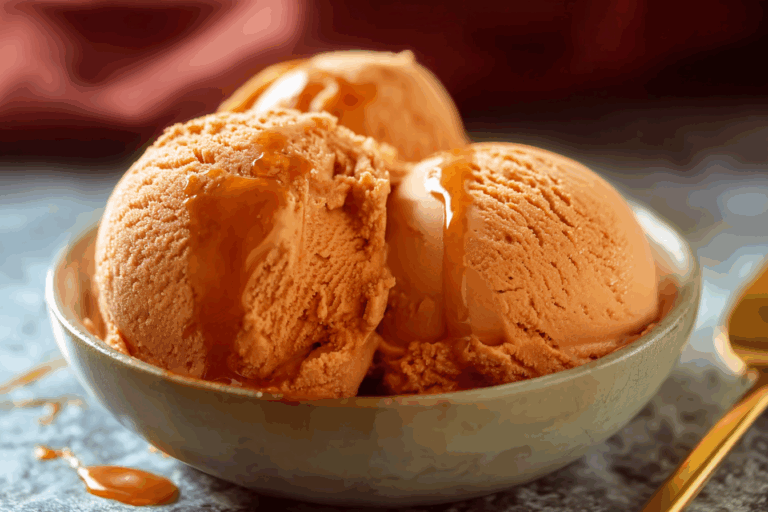
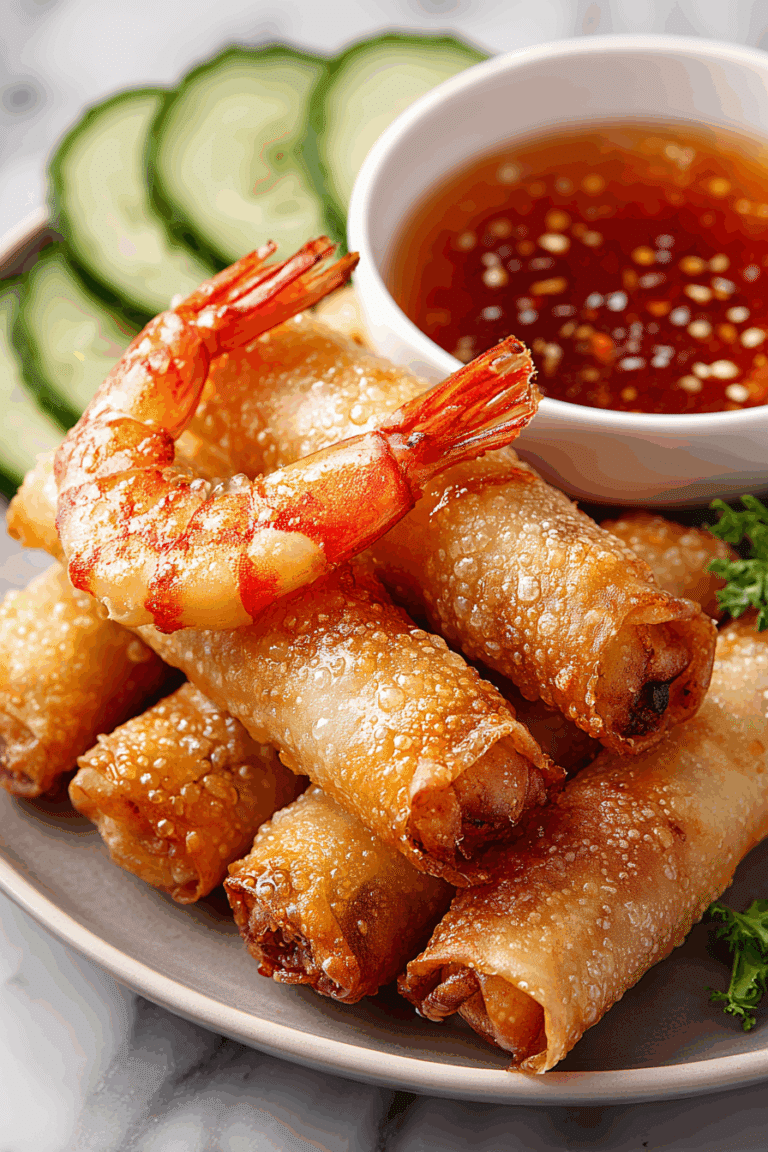
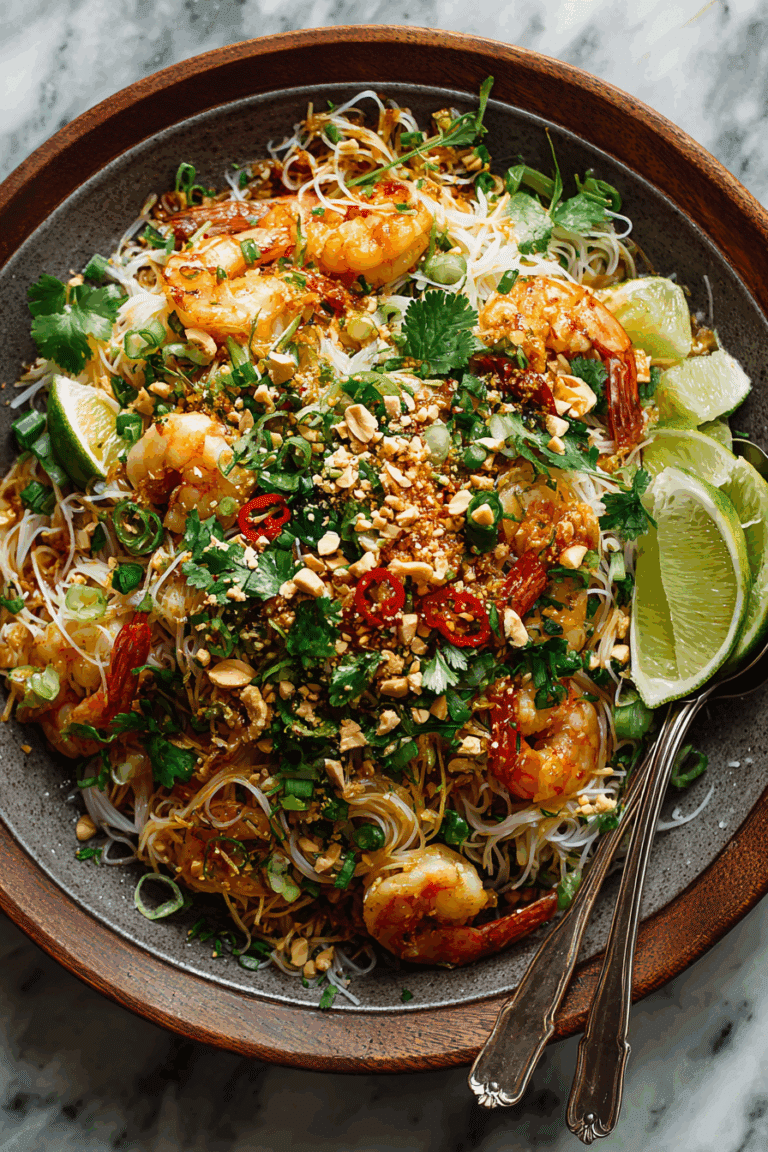
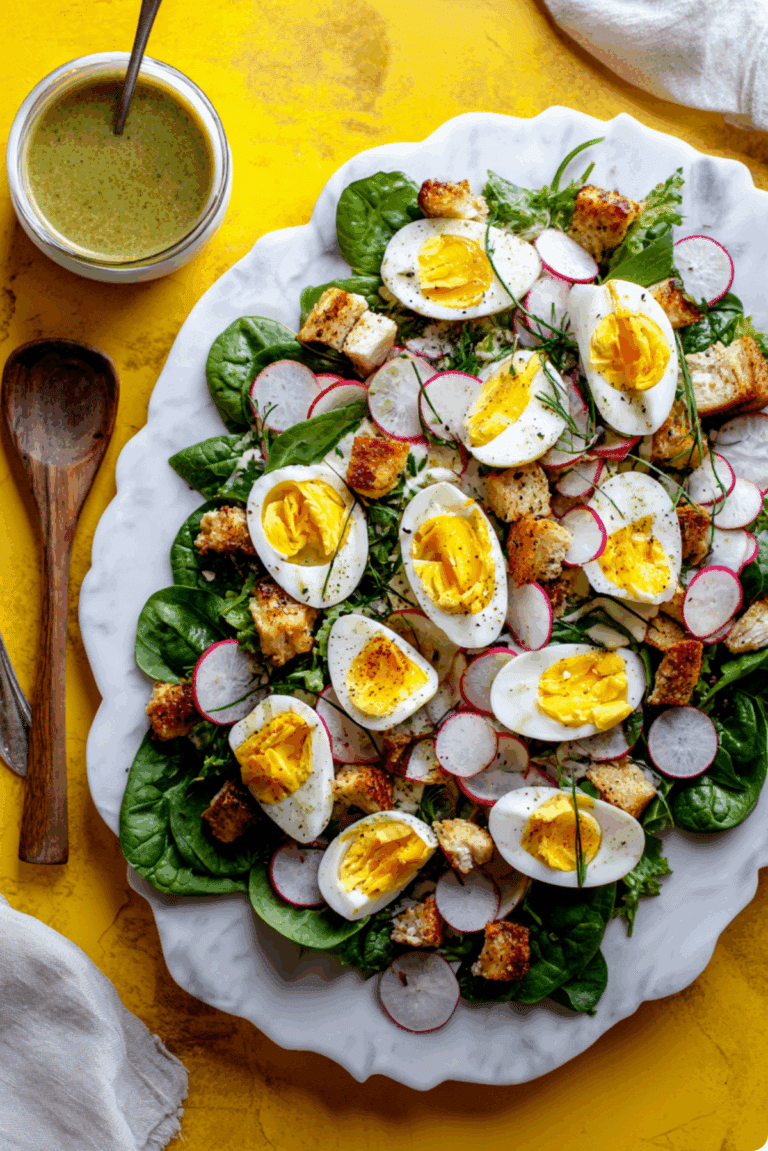
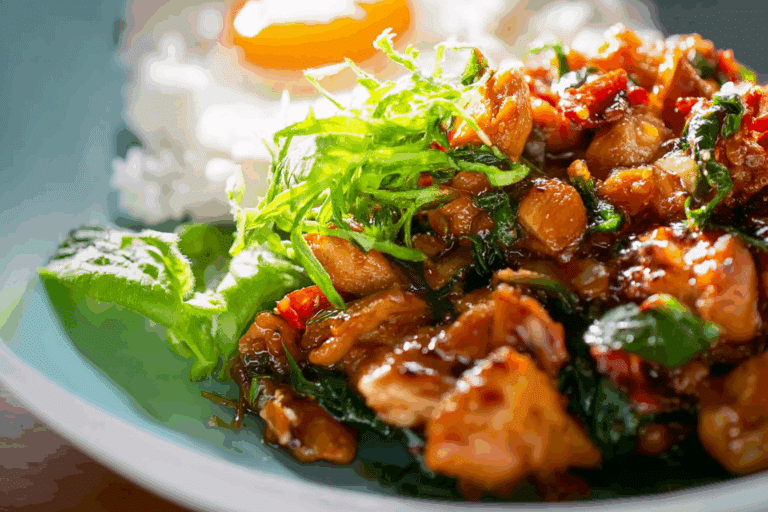
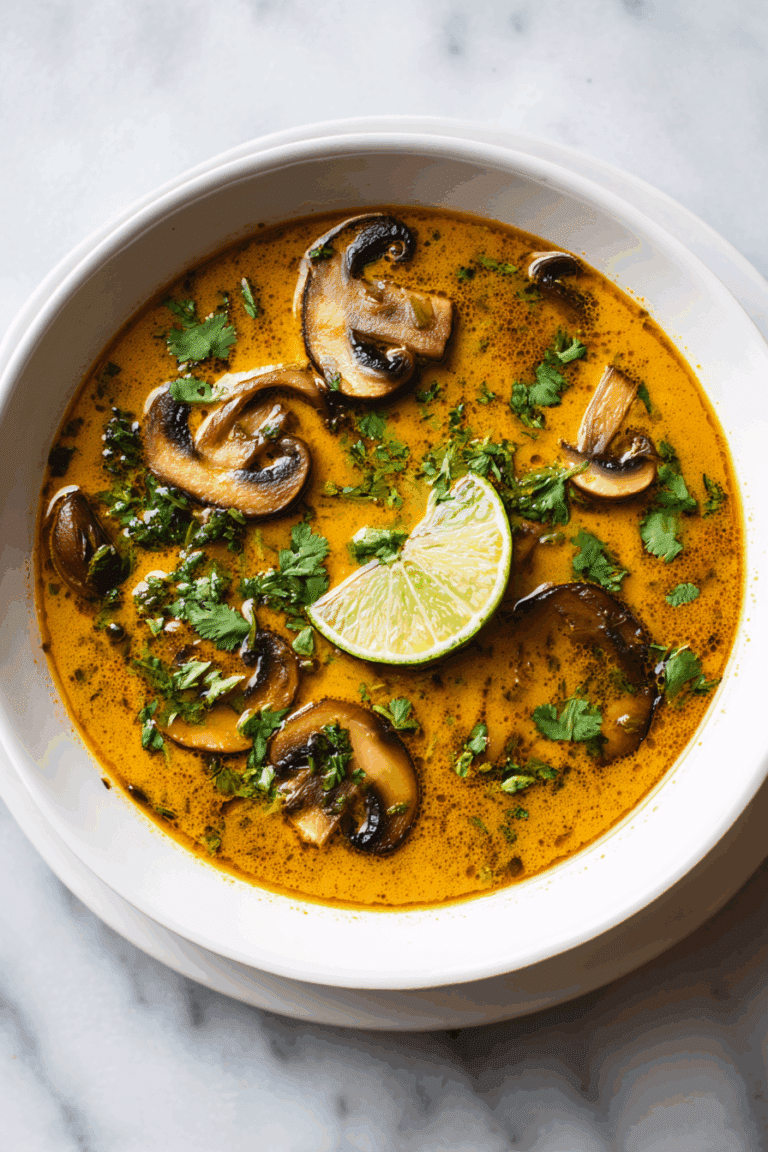
Very good blog! Do you have any suggestions for aspiring writers? I’m hoping to start my own website soon but I’m a little lost on everything. Would you advise starting with a free platform like WordPress or go for a paid option? There are so many options out there that I’m totally confused .. Any recommendations? Thanks a lot!